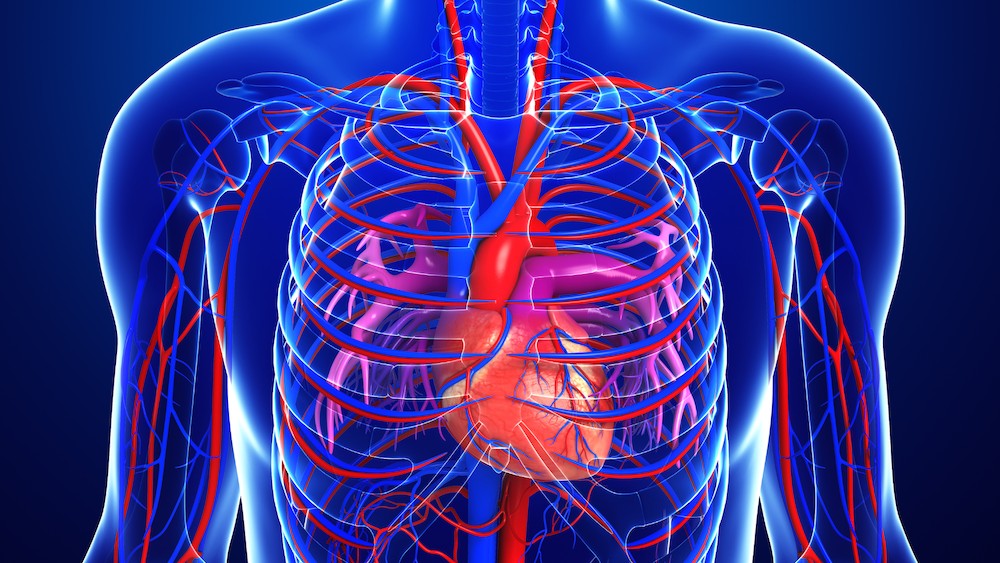When implanted into laboratory rats, the model successfully mimicked dilation of the human aorta.

Using human cells in laboratory rats, Michigan Medicine researchers have developed a functional model of thoracic aortic aneurysm, creating opportunities for more effective understanding of disease development and treatments for the potentially fatal condition, a study suggests.
There are currently no medical treatments for thoracic aortic aneurysm, which is a weakening and bulging at the body’s largest blood vessel in the chest.
The aneurysm often does not cause any symptoms and must be repaired through open-heart surgery.
It carries high risk of aortic dissection or rupture, which can be lethal.
“Over several decades, drug candidates to treat thoracic aortic aneurysm that succeeded in mouse aneurysm models did not successfully translate over to humans in clinical trials,” said Bo Yang, M.D., Ph.D., a cardiac surgeon and a basic scientist at the University of Michigan Health Frankel Cardiovascular Center who led the research team, which was supported by National Institutes of Health R01 grants.
“We now have the first efficient, 3D model of this disease using human cells. This opens a new avenue for drug development and more effective screening to one day stop the aneurysm before a deadly aortic dissection or rupture.”
To create the model, Yang’s research team utilized bioengineered vascular grafts, or BVGs.
They took blood from patients who carried the pathogenic variant that leads to aortic aneurysm, extracted cells and reprogrammed them into induced pluripotent stem cells.
These stems cells were differentiated into smooth muscle cells used for generating the BVGs, since the smooth muscle cells provide structural support for blood vessels and are essential to their function.
Then, they seeded those smooth muscle cells onto biodegradable scaffold, which is a tube-like structure.
The cells grew over eight weeks and took place of the degrading material during that time, eventually forming stable, self-supporting grafts.
“Genetic mutations play a significant role in someone’s susceptibility to developing thoracic aortic aneurysm,” said first author Ying Yang, Ph.D., postdoctoral research fellow in cardiac surgery at U-M Medical School.
“We utilized gene editing to manipulate the gene in human cells, specifically Loeys-Dietz Syndrome, a genetic disorder characterized by aneurysms at the aortic root.”
To test the viability of the aneurysm model, the researchers used CRISPR/Cas9 gene editing to introduce the pathogenic variant in normal human cells to cause the aneurysm; and to correct the variant in the patient’s cells and develop a healthy vascular graft. The control and experimental BVGs were implanted into the carotid arteries of rats.
Over time, the bioengineered grafts carrying the aneurysm variant showed impaired mechanical properties and dilated compared to the healthy grafts.
While the healthy vessel did not dilate, the genetically modified graft grew up to around 40% — resembling human formation of thoracic aortic aneurysm.
The results are published in Science Translational Medicine.
“While we utilized these bioengineered grafts to study the pathogenesis of Loeys Dietz Syndrome, we now have a platform with the potential to be applied to other pathogenic variants associated with thoracic aortic aneurysm and dissection,” said Dogukan Mizrak, Ph.D., co-senior author and research assistant professor of cardiac surgery at U-M Medical School.
“This is a major first step. We have a model that is human cell-based, which puts us in a position to more effectively assess drugs aimed to treat the condition.”
Thoracic aortic aneurysm occurs in approximately six to 10 per 100,000 people.
In 2019, aortic aneurysms and dissections caused over 9,000 deaths in the United States.
“We are currently exploring potential drugs that could be tested using our new, more efficient model,” said Eugene Chen, M.D., Ph.D., co-senior author of the study and Frederick G. L. Huetwell Professor of Cardiovascular Medicine at University of Michigan Medical School.
“This is an incredibly exciting time for research in the area of aortic aneurysm.”
Special thanks to all patients who donated their blood for this research.
Additional authors include Hao Feng, M.D., Ying Tang, Zhenguo Wang, Ph.D., Ping Qiu, Ph.D., Xihua Huang, D.N.P., Lin Chang, Ph.D., Jifeng Zhang, Ph.D., all of University of Michigan.
This study was supported by the National Institutes of Health and the American Heart Association Postdoctoral Fellowship.
Paper cited: “Bioengineered vascular grafts with a pathogenic TGFBR1 variant model aneurysm formation in vivo and reveal underlying collagen defects,” Science Translational Medicine. DOI: 10.1126/scitranslmed.adg6298
This story was originally published by the Michigan Health Lab Blog on May 13, 2024.